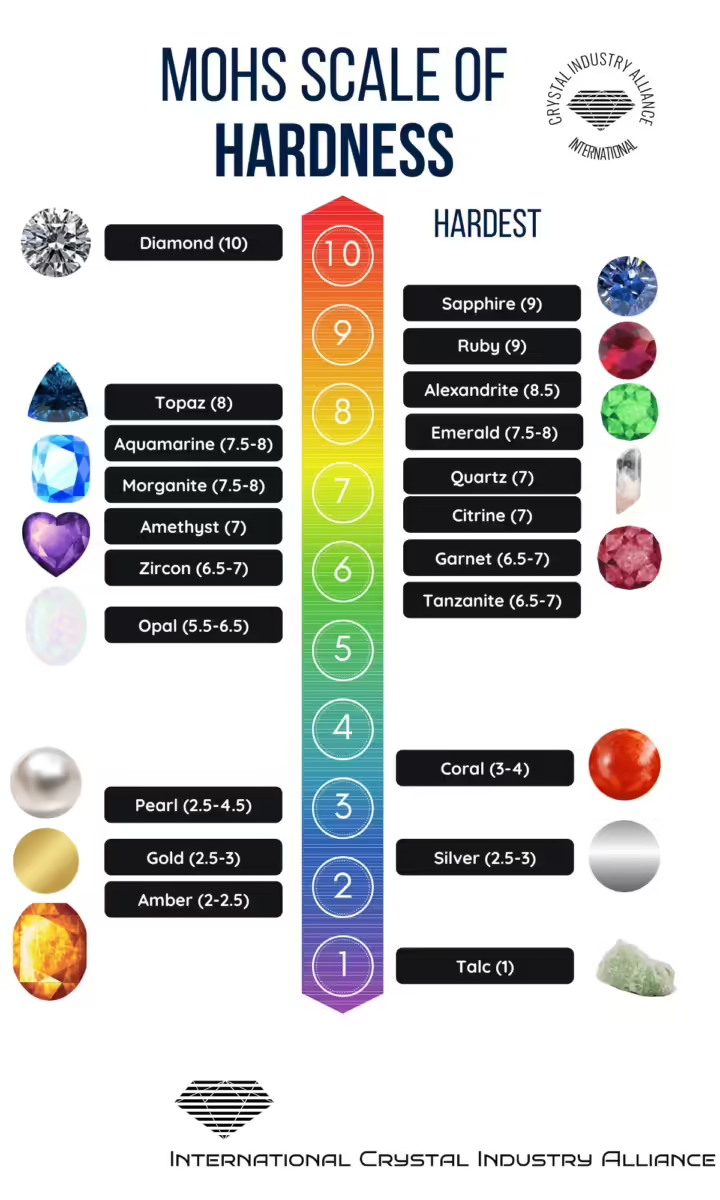The Mohs Scale of Hardness
When looking at gems, it’s easy to see the color and shape, but with a better look one can also see clarity and strength.
Gems are minerals that occur naturally, forming in crystalline structures, which create varying levels of strength. A German geologist, Friedrich Mohs, created a scale to determine how strong these minerals were compared to one another.
Mohs scale is based on whether one of the gemstones could scratch another; the stronger one marks the softer one. The hardness scale is not like stairs, with one being incrementally stronger than the previous one, but more like stepping stones that are sometimes closer or further apart than others.
Diamonds, often seen in movies to cut glass, is proven to be the strongest of the natural gemstones, while talc is soft and often used in powder form. The two minerals represent the range of strength found naturally. So when looking at gemstones, remember there is more than just shape and color.

Reference values for Mohs hardness of common substances
| Hardness rating | Representatives |
|---|---|
| Class 1 (talc). | graphite |
| 1½ | skin、arsenic |
| 2½ | ice、Chang fossils、Bahrain Stone、Aotianishi、Shoushan stone、fingernail、amber、ivory、gold、silver、aluminium |
| Class 3 (calcite). | pearl、copper |
| 3½ | seashell |
| 4½ | platinum、iron |
| 5½ | stainless steel |
| Grade 6 (orthoclase). | Tanzanite、titanium |
| 6½ | tooth(outer layer of crown),Hetian jade、pyrite、jadeite、glass |
| Grade 7 (quartz). | crystal |
| 7½ | tourmaline、zircon、garnet |
| 8½ | beryl |
| Grade 9 (corundum). | chromium、Tungsten |
| 9½ | Moissanite |
| 10½ | Polymerized diamond nanorods、Carbon nitride |
| Note: “N1/2” in this table indicates all cases where the hardness is greater than N and less than N+1 (if any). | |